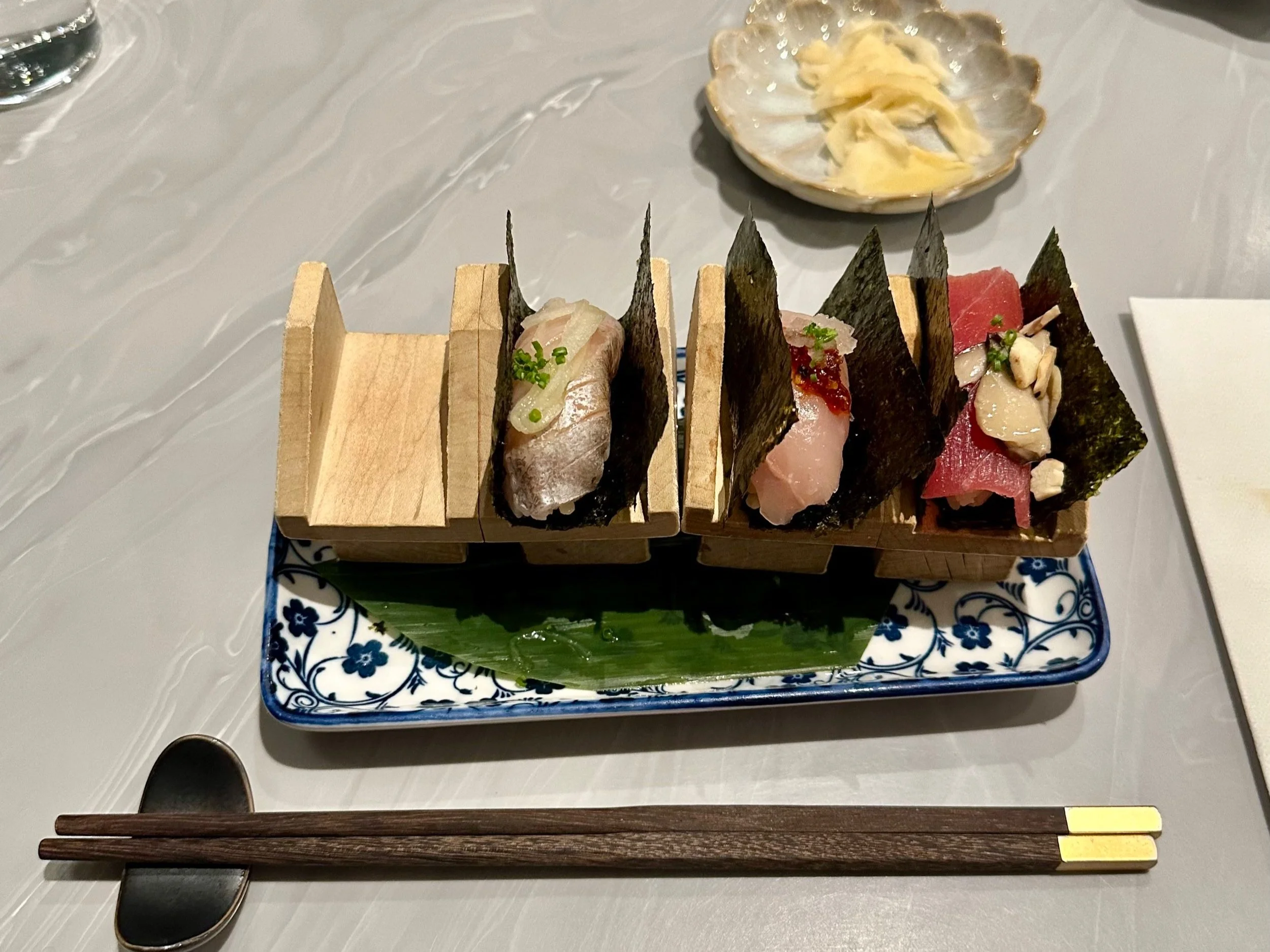An Ayurvedic Taste of Sushi
Lunch is ideally the main meal of the day. Eating a substantial lunch provides the digestive system what it needs when it needs it.
Digestion is maximal around noon to early afternoon as opposed to dinner time. The body prepares for rest in the evening, thus slowing digestion and making it incompatible with large meals.
The problem is that we are not Capote’s ladies who lunch.
We either take very little time for lunch or skip it altogether thinking that it improves productivity.
Sushi rescues ayurvedic lunching.
it provides robust flavor, incorporates balancing tastes, and can fit into a regular lunchtime.
THE $CIENCE
Without rushing, 20-30 minutes at Kamasu by Kissaki took care of lunchtime needs.
The six Ayurvedic tastes are salty, astringent, bitter, sweet, sour and pungent. Salty, sweet and sour reduce Vata season’s dispositions like feeling cold, low appetite, parched skin and anxiety.
Taste receptors (TR) are present beyond tastebuds. Ayurvedic tastes are not simply the sensation recognized by tastebuds, but rather the interaction with extra-oral receptors. These receptors are on the GI tract, hippocampus and liver, for example. It is suggested that specific taste receptors recognize particular tastes, like sour or salty. Salty taste is detected by TR I and III, which act through ion channels. Hot tastes like pungent, permeate cells while cold tastes like astringent work through G-protein coupled receptors and signaling pathways.
The meal began with a warm miso soup to whet the appetite. Salty taste and hot temperature support the digestive system during Vata season when appetite is typically weak or irregular. The hulled and black sesame seeds was a great addition for delicately equilibrating the salty taste because it is an amalgamation of sweet, bitter and astringent properties.
Next was the set of four temaki- kanapachi, sake, akami and striped bass. This was quite filling with a wide range of flavors and textures. The plum soy topping on the baby yellowtail and striped bass added a sweet and sour quality. The sweetness of rice, salmon and almonds are hydrating and grounding. (Note: Salmon temaki missing in the photo because it was eaten before remembering to take a picture)
Dipping the sushi in soy was skipped because it is considered an astringent, which on it’s own increases Vata’s lightness.
The six-piece spicy tuna maki with cucumber was a flavorful balance of hot and cool, pungent and sweet. The spice left on the palate imparts a satisfying end-of-meal experience. Capsaicin is not recommended for supper because it may disrupt EEGs during sleep (in rats). On the other hand, the delicate seasoning oil this maki gratified the appetite and heightened alertness.
Pretty good way to avoid the afternoon slump and return to work.
Bottom Line
Kamasu by Kissaki at Hudson Yards provides a filling and plentiful lunch. The Bowery and the Hamptons also have Kissaki restaurants. They source their ingredients from their own fishery, which imparts freshness. According to Kamasu’s staff member Anthony, their lunch special for Restaurant Week ends February 11, 2024. The temaki sets are regularly available on their menu.










